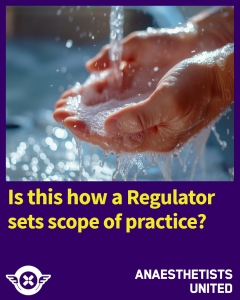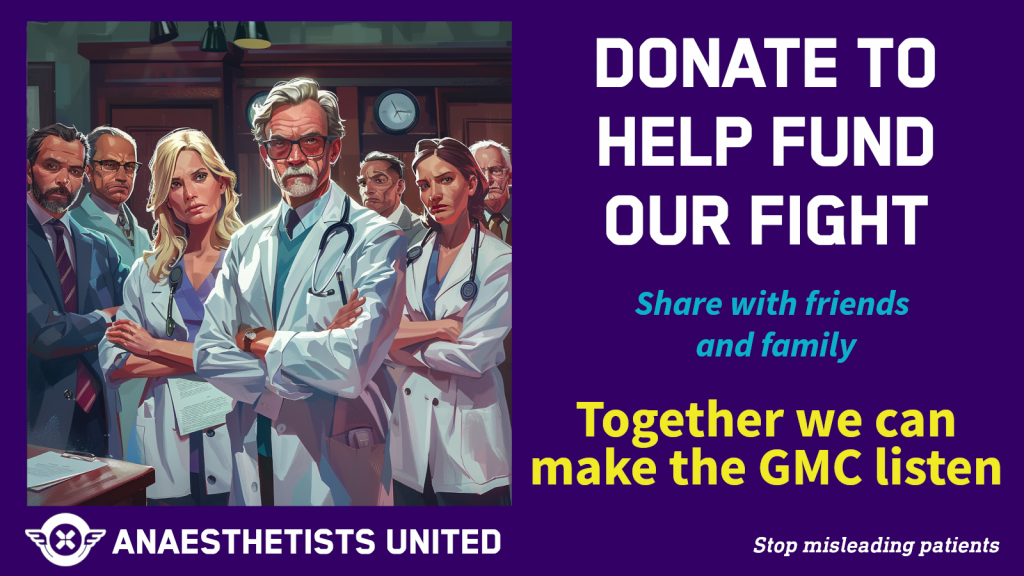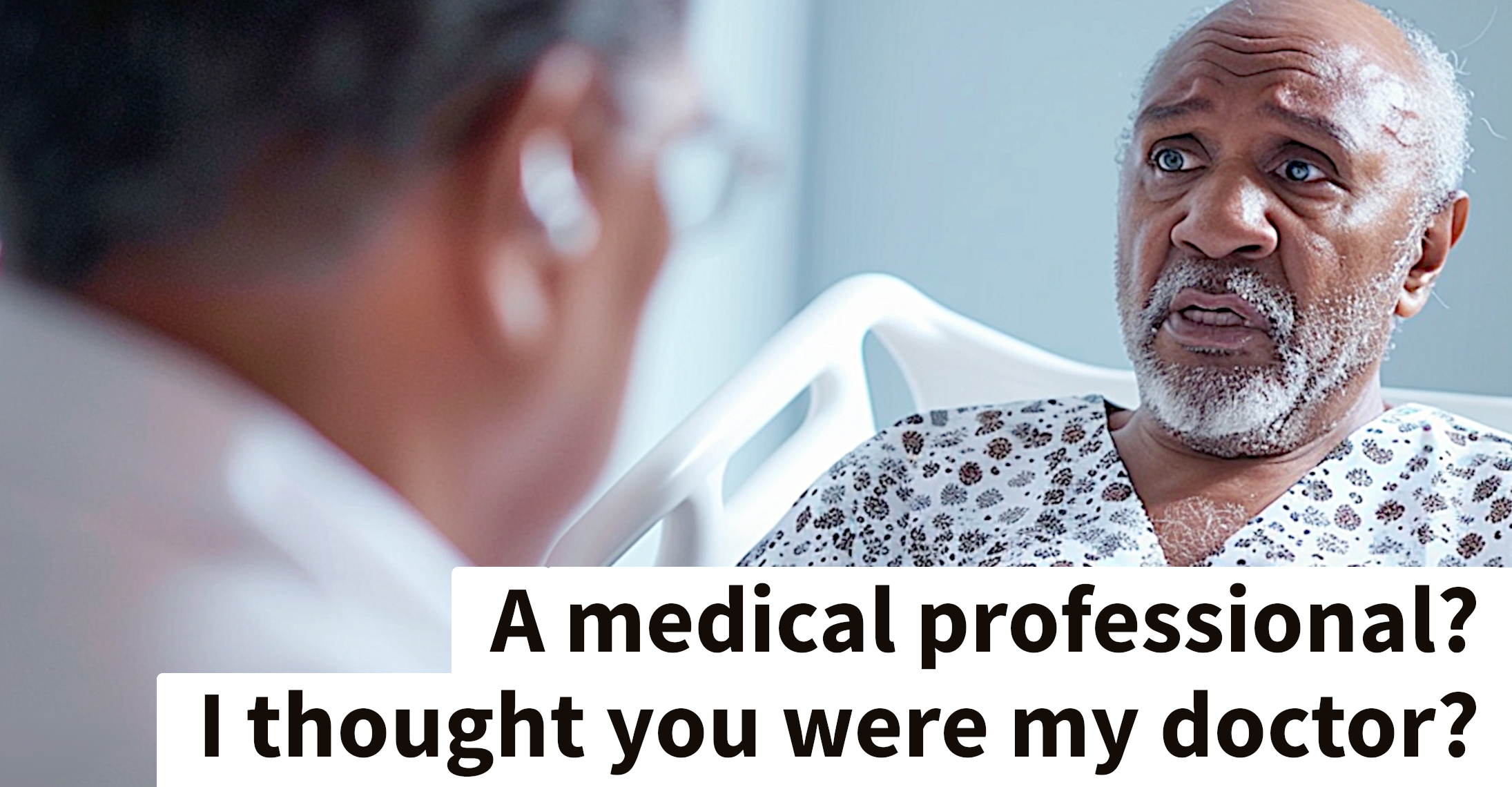We have summarised below the relevant legislation and arguments that we will be using.
The Medical Act 1983
The Health Act 1999
The Anaesthesia Associates and Physician Associates Order (AAPAO) 2024
The publication of ‘Good Medical Practice’ and the phrase medical professionals.
Display of the ‘Medical Register’
GMC refusal to set scope of practice for associates – The Health Act
Failure to set rules and consult over scope of practice – The AAPAO
The Medical Act 1983
There are two parts of the Medical Act that are relevant to our case. Sections 1 and 2 state that
1 The General Medical Council.
…
(1A)The over-arching objective of the General Council in exercising their functions is the protection of the public.
(1B)The pursuit by the General Council of their over-arching objective involves the pursuit of the following objectives—
(a)to protect, promote and maintain the health, safety and well-being of the public,
(b)to promote and maintain public confidence in the medical profession, and
(c)to promote and maintain proper professional standards and conduct for members of that profession
2 Registration of medical practitioners.
(1)There shall continue to be kept by the registrar of the General Council (in this Act referred to as “the Registrar”) of medical practitioners registered under this Act containing the names of those registered and the qualifications they are entitled to have registered under this Act.
We can infer from this that:-
- There is something called the ‘medical profession’ and ‘medical practitioners’ (colloquially ‘doctors’) who under this Act are registered with the GMC if they attain and maintain the appropriate standards of training and conduct described elsewhere.
- It logically follows that these medical practitioners, and they alone, are in ‘medical practice’.
- That the duty of the GMC is to protect the health of the public, and they deliver this duty by ensuring that the public has confidence in the members of that profession.
The colloquial term ‘doctor’ is of no legal value in describing a medical person, since the same term is used by holders of a PhD or other higher degrees (this ambiguity does not apply to dentists). For convenience, though, I will use the term ‘doctor’ here in the way that the man on the Clapham Omnibus would do.
Implicit in Section 1 of the Medical Act is that the public needs to be aware of who is, and who is not, a medical practitioner (especially since there is such ambiguity around the word ‘doctor’). This requirement is reinforced and made explicit in Section 49, which states:
49 Penalty for pretending to be registered.
(1)... any person who wilfully and falsely pretends to be or takes or uses the name or title of physician, doctor of medicine, licentiate in medicine and surgery, bachelor of medicine, surgeon, general practitioner or apothecary, or any name, title, addition or description implying that he is registered under any provision of this Act, or that he is recognised by law as a physician or surgeon or licentiate in medicine and surgery or a practitioner in medicine or an apothecary, shall be liable on summary conviction to a fine not exceeding level 5 on the standard scale
49A Penalty for pretending to hold a licence to practise
(1)If a person who does not hold a licence to practise—
a)holds himself out as having such a licence; or
(b)engages in conduct calculated to suggest that he has such a licence,
he shall be liable on summary conviction to a fine not exceeding level 5 on the standard scale.
Section 49 is worded in a broad and inclusive way to make clear that the precise wording used by those that are not doctors is imprecise; those that are not doctors must not use any form of description or title that suggests that they are.
The Health Act 1999
New professions can be regulated by Statutory Instrument. Section 60 of the Health Act 1999 allows the Crown to make provision for
(a)modifying the regulation of any profession to which subsection (2) applies, so far as appears to Her to be necessary or expedient for the purpose of securing or improving the regulation of the profession or the services which the profession provides or to which it contributes,
(b)regulating any other profession which appears to Her to be concerned (wholly or partly) with the physical or mental health of individuals and to require regulation in pursuance of this section.Schedule 3 of Section 60 adds that
Regulation of health care and associated professions
Matters generally within the scope of the Orders
1 An Order may make provision, in relation to any profession, for any of the following matters (among others)—
(a)the establishment and continuance of a regulatory body,
(b)keeping a register of members admitted to practice,
(c)education and training before and after admission to practice,
(d)privileges of members admitted to practice,
(e)standards of conduct and performance
Setting the privileges (or scope of practise) for members of any new or novel profession seems critically important because there is no established custom or practice that determines what they can and cannot do. Yet as we will discuss, the GMC are deliberately failing to address this.

The Anaesthesia Associates and Physician Associates Order (AAPAO) 2024
This Statutory Instrument was passed by Parliament in February 2024. It makes provision for the GMC to regulate Anaesthesia Associates and Physician Associates (AAs and PAs) – collectively described by the Order as ‘associates’. It gives the GMC as regulator powers to determine standards applicable to associates (including standards of training and fitness to practise).
It requires (Section 5) that the Regulator keeps a single register of those persons registered under the Order, divided into AAs and PAs but no further.
And in Section 3 of Schedule 1 (under Section 20) it gives the GMC additional objectives and duties on top of those under the Medical Act.
Objective, matters to which the Regulator must have regard and co-operation
3.—(1) The Regulator, in addition to its objectives and duties set out in section 1(1A) and (1B)(a) of, and paragraph 9A(1)(b) of Schedule 1 to, the Medical Act 1983(2)—
(a)has the objective of promoting and maintaining—
(i)public confidence in, and
(ii)proper professional standards and conduct for members of,
the anaesthesia associate and physician associate professions,
(b)must have regard, in exercising its functions under this Order, to—
(i)the interests of persons using or needing the services of associates in the United Kingdom,
(ii)any differing interests of different categories of anaesthesia associates and physician associates, and
(iii)the principle that regulatory activity should be targeted only at cases in which action is needed,
(c)must discharge its functions under this Order in a way which is transparent, accountable, proportionate and consistent,
We can infer from this that:-
- The AA and PA professions are entirely separate from the medical profession.
- That maintaining confidence in this new profession must be done in such a way as to be completely transparent to the lay person there should never be any ambiguity as to whether a healthcare professional is a doctor or an associate.
- The objectives for the two professions are entirely distinct.
The GMC are to take over the regulation of associates in December 2024.
The publication of ‘Good Medical Practice’ and the phrase medical professionals.
‘Good Medical Practice’ (GMP) has for many years been the standard GMC guidance for doctors, defining the standards of care and behaviour that are expected. It is used as a reference to determine Fitness to Practise.
The latest version of GMP, published after a series of consultations in August 2023 and effective from January 2024, was extended to encompass the standards of care and behaviour for associates as well as doctors.
The GMC repeatedly uses the term ‘medical professionals’ in GMP (and elsewhere) to refer to all their registrants (ie both doctors and associates). It is our assertion that this is inappropriate. Doctors alone are ‘medical practitioners’ and they alone are in medical practice. We consider that “Good Medical Practice” cannot apply to associates, since they are not in medical practice, and that in doing so the GMC are encouraging breach of s49 of the Medical Act. The public are likely to infer from GMP2024 that associates are members of the medical profession and therefore a new type of doctor.
For this reason we have asked that GMP is separated into two sets of guidance, one for doctors and one for associates. Whilst many of the professional standards will be shared, there are several points of difference.
By using the plural i.e. multiple medical professions, the GMC is newly declaring PAs and AAs to belong to ‘a’ medical profession but not ‘the’ medical profession. This subtlety and likeness to “member of the medical profession” (i.e. a registered doctor) does not reflect the will of Parliament and gives a false impression that associates are doctors, a type of doctor or equivalent to a doctor.
Display of the ‘Medical Register’
The AAPAO requires a new and distinct register for associates; ensuring that the public know who is a doctor and who is not is an essential task. However the GMC recently published a news article How our public facing registers will look once regulation of PAs and AAs begins which in our opinion blurs the two groups.
In our initial letter to the GMC we made it clear that, in our opinion, this implies that associates are a form of doctor and that the layout is confusing for patients. In their reply to us the GMC have said they will make efforts to improve on this.
GMC refusal to set scope of practice for associates – The Health Act

Although Schedule 3 of the Health Act gives the regulator the power to determine the “privileges of members admitted to practice” the GMC have deliberately refused to do this. In a news article on their website published in October 2023 they announced “...we won’t set hard boundaries for a PA’s or AA’s scope of practice. This will be for employers and medical royal colleges and faculties to define.” They have repeated and reinforced this message.
Although some of the Medical Royal Colleges (notably the Royal College of Anaesthetists) are anxious to set the scope of practice for associates others are less keen; and it is hard to see why they would invest the effort in doing so if the GMC is effectively undermining them by allowing the employers (ie market forces) to dictate scope.
We believe that their failure to set scope is reckless and contravenes the Medical Act and AAPAO, which require the GMC to maintain public confidence in the two different professions, and contravenes the AAPAO requirement to “….have regard for the interests of persons using or needing the services of associates” and to do so in a way that is “transparent, accountable, proportionate and consistent”.
Failure to set rules and consult over scope of practice – The AAPAO
Finally, we come to Sections 3 and 7 of the AAPAO which requires the Regulator to set rules for Associates.
3.—(1) The Regulator must determine standards applicable to associates.
(2) The standards must relate to—
(a)education and training,
(b)knowledge and skills,
(c)experience and performance,
…..
(f)such other matters as the Regulator may prescribe in rules made under paragraph 2(2)(a) of Schedule 4.
(3) Before determining a standard, the Regulator must consult such persons as the Regulator considers appropriate.
Periodic assessment
7. The Regulator must carry out a periodic assessment as to whether a registrant continues to meet the standards determined under article 3(1). The AAPAO requires the Regulator to set standards. And the first and most obvious standard that needs to be set is “what can an Associate do?” The Order specifies that these standards must relate to standards of experience and performance. This is not simply on entry to the register; S7 specifies this is reviewed periodically.
It also gives a duty for consultation. Yet in their recent consultation on rules there was no mention of this.
Patients, the public, employers and healthcare professionals need clear answers to the questions: ‘What is the meaningful difference between a doctor and an associate? What can or can’t an associate do as a consequence?’
We would draw a comparison with the General Dental Council, also regulators of multiple professions, who publish a scope of practice for each of the professions (dentists, dental nurses, hygienists, technicians and others) that they regulate and who make it clear who can do what. In addition, the public is fully aware of the differences between a dentist and a dental technician whereas AAs and PAs are novel and not fully understood.
We are appealing for money in order to get a formal legal opinion on these arguments that we have put forward. We are working with Bindmans LLP and Blackstones. Please consider making a donation to us.

